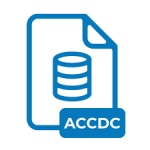.DB3 File Extension

SQLite Database File
| Developer | SQLite |
| Popularity | |
| Category | Database Files |
| Format | .DB3 |
| Cross Platform | Update Soon |
What is an DB3 file?
.DB3 files are associated with SQLite, a powerful and lightweight relational database management system. SQLite databases are self-contained, meaning they reside in a single cross-platform file, often with the .DB3 extension.
These files store structured data and support a wide array of applications ranging from mobile apps to desktop software and even web browsers.
More Information.
SQLite initially emerged as an embedded database engine, designed for local storage within applications.
Its primary goal was to provide a lightweight, efficient, and easy-to-use database solution without the need for a separate server process. Over time, SQLite gained widespread adoption due to its reliability, simplicity, and versatility.
Origin Of This File.
The roots of .DB3 files trace back to the early 2000s when D. Richard Hipp created SQLite as a small, fast, self-contained, high-reliability, full-featured SQL database engine.
The .DB3 extension emerged as the default file extension for SQLite version 3, succeeding its predecessors, .DB and .DB2.
File Structure Technical Specification.
.DB3 files follow a well-defined structure adhering to the SQLite database format. At its core, an SQLite database file consists of various components, including:
- Header: Contains essential metadata about the database file, such as the file format version, page size, and encoding.
- Master Table: Stores schema information, including the names and definitions of tables, indexes, and other database objects.
- Data Pages: Hold the actual data stored within the tables, organized in B-tree structures for efficient retrieval.
- Indexes: Facilitate quick data lookup by maintaining sorted lists of key-value pairs.
SQLite databases utilize a page-based storage mechanism, where data is stored in fixed-size pages (typically 4096 bytes). This architecture enables efficient data retrieval and manipulation while ensuring data integrity and reliability.
How to Convert the File?
Converting .DB3 files to other formats or database systems typically involve exporting the data from SQLite and importing it into the desired format or system. This process can be accomplished using various tools and methods, including:
- SQLite Command Line Tools: SQLite provides command-line utilities like sqlite3, which allow users to execute SQL commands and export data in different formats.
- Third-Party Conversion Tools: Several third-party tools and libraries offer functionality for converting SQLite databases to other formats, such as CSV, JSON, or MySQL.
- Custom Scripts: For more complex conversion tasks, custom scripts or programs can be developed using programming languages like Python, Java, or C# to automate the process.
Advantages And Disadvantages.
Advantages:
- Portability: Since SQLite databases are self-contained files, they can be easily copied, moved, and shared across different platforms and systems.
- Simplicity: SQLite has a minimalistic design, making it easy to integrate into applications and requiring little to no configuration.
- Compatibility: SQLite databases are supported by a wide range of programming languages and platforms, including Python, Java, C/C++, and more.
- Performance: For many use cases, SQLite offers impressive performance, especially in scenarios with low to moderate data volume and concurrent connections.
Disadvantages:
- Concurrent Access: While SQLite supports concurrent read access, it does not handle concurrent write access well, which can lead to performance bottlenecks in high-traffic applications.
- Scalability: SQLite may not be suitable for applications requiring massive scalability or high throughput, as it lacks the distributed architecture of traditional client-server database systems.
- Limited Functionality: Compared to heavyweight database systems like MySQL or PostgreSQL, SQLite has a more limited set of features and may not be suitable for complex data processing tasks.
How to Open DB3?
Open In Windows
- On Windows, you can open .DB3 files using SQLite database management tools like DB Browser for SQLite or SQLiteStudio. Simply download and install the software, then use it to open the .DB3 file.
Open In Linux
- Linux users have access to a plethora of SQLite management tools, including SQLite Browser and DBeaver. Install your preferred tool from the package manager or download it from the official website and use it to open .DB3 files.
Open In MAC
- macOS users can utilize SQLite database browsers such as Base or TablePlus to open .DB3 files. These tools provide intuitive interfaces for browsing and managing SQLite databases.













